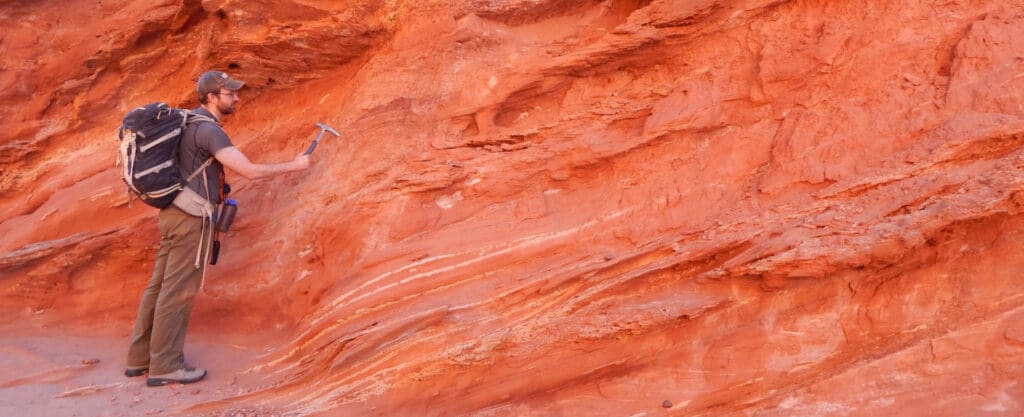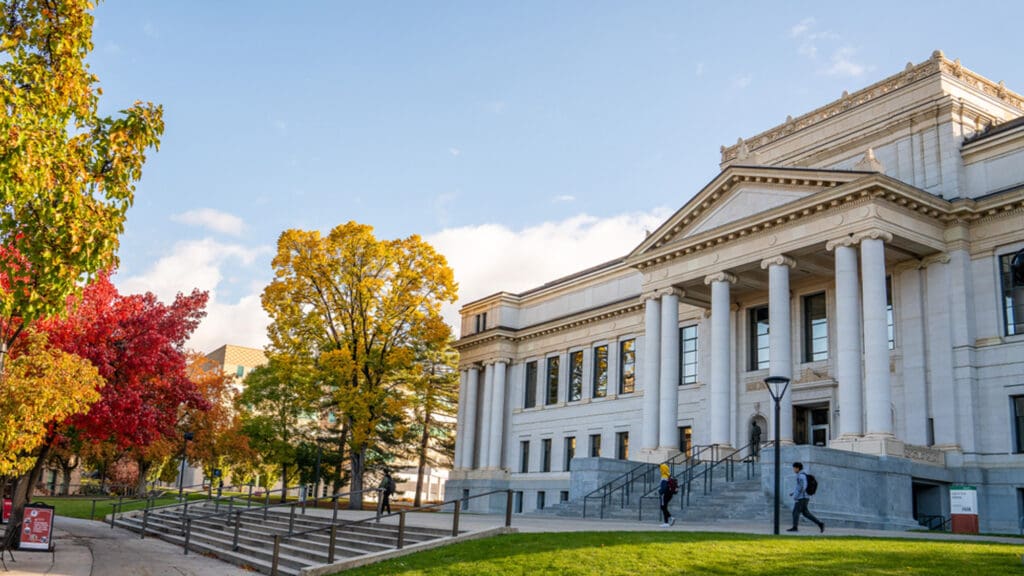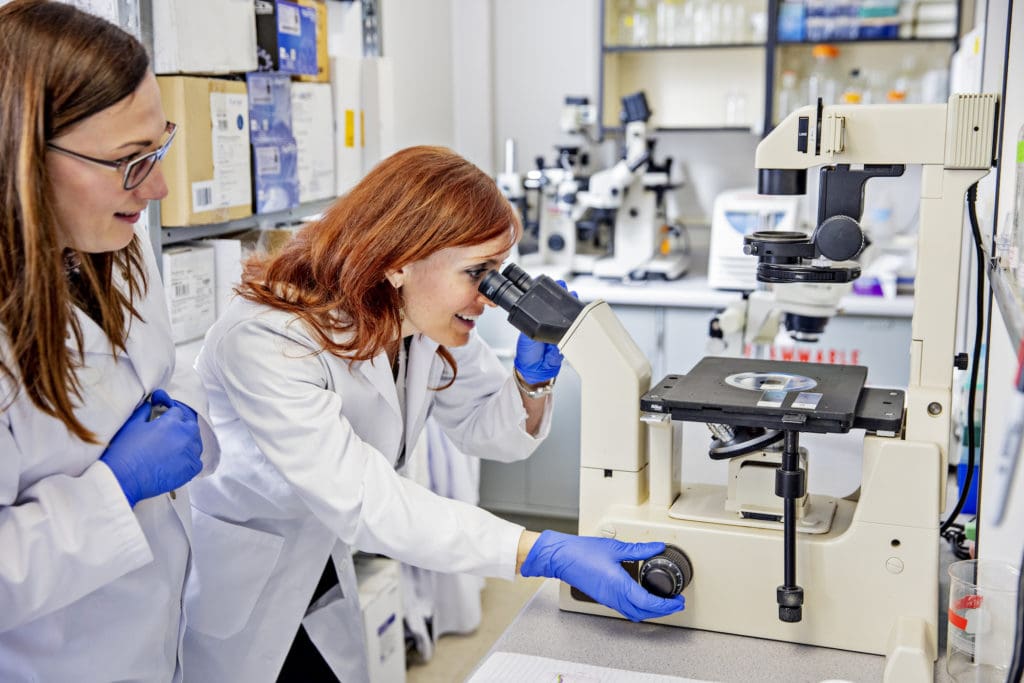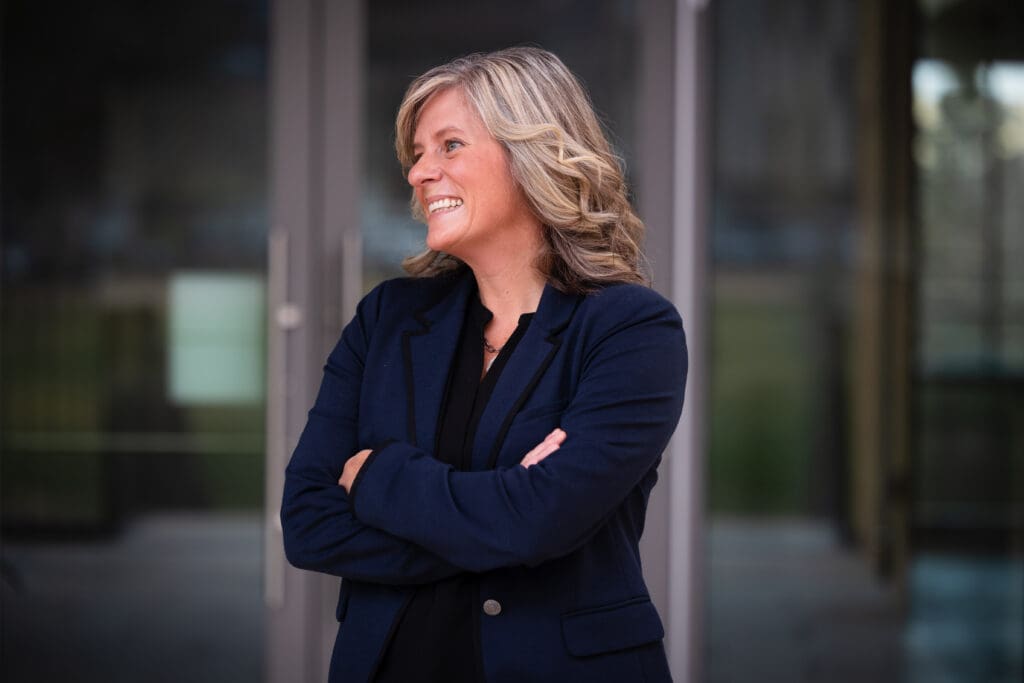January 4, 2024
Bone Detective
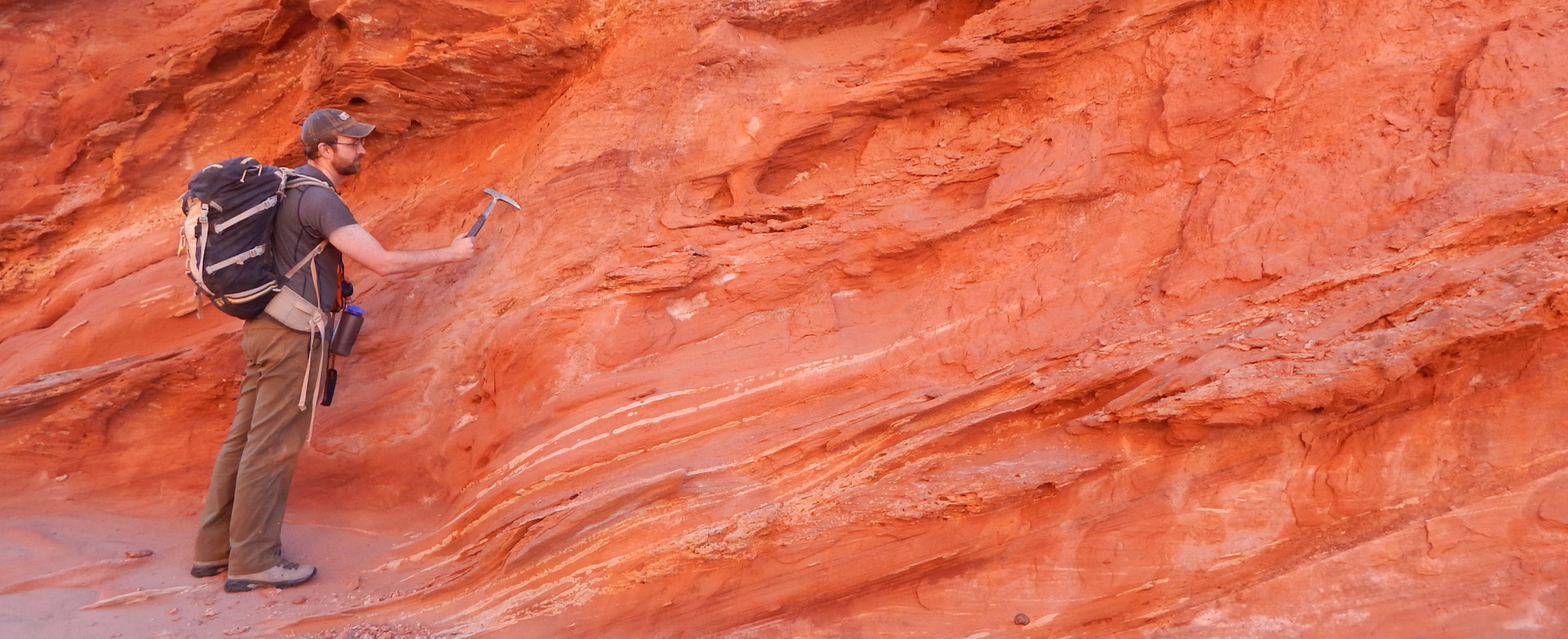
NHMU Curator of Paleontology Randy Irmis in Argentina. Image by Adriana Mancuso.
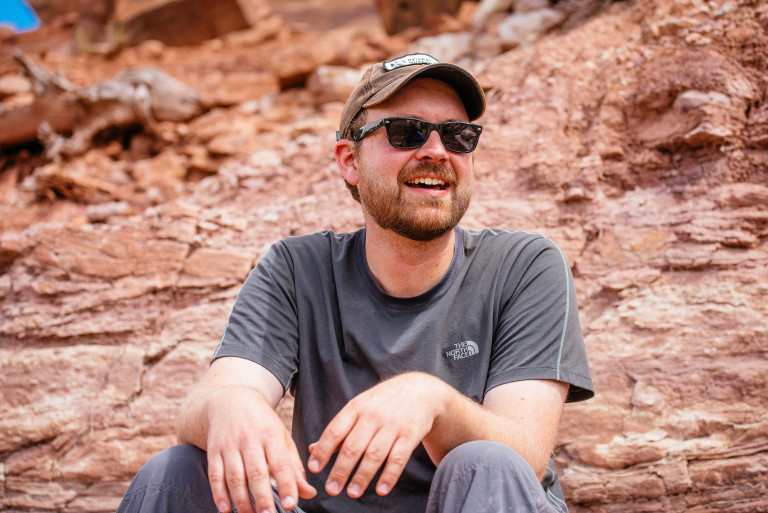
Randy Irmis takes a break while working in the Dystrophaeus quarry in the Utah desert. Image by Jeremiah Watt
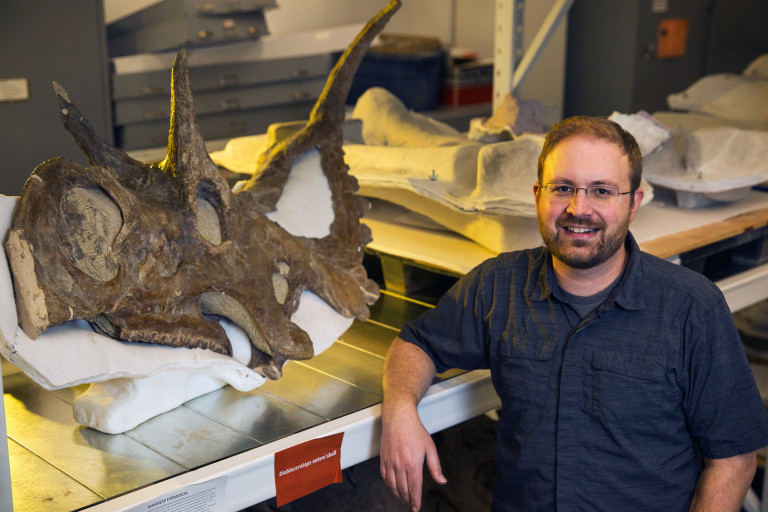
Randy Irmis in the paleontology collections at NHMU. Image by Mark Johnston
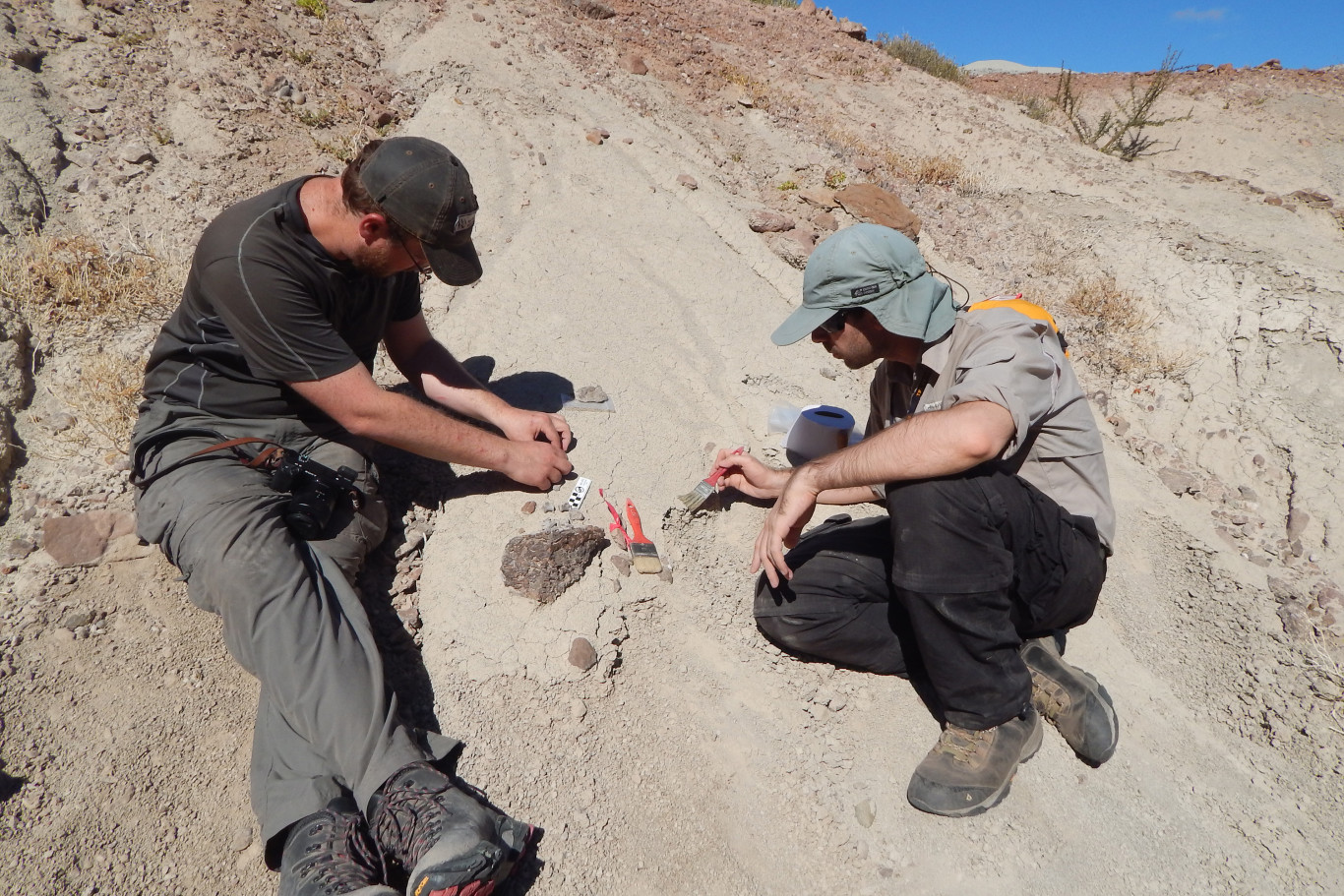
Randy Irmis, left, and Lean dro Gaetano excavate a fossil in the field in Argentina. Image by Adriana Mancuso
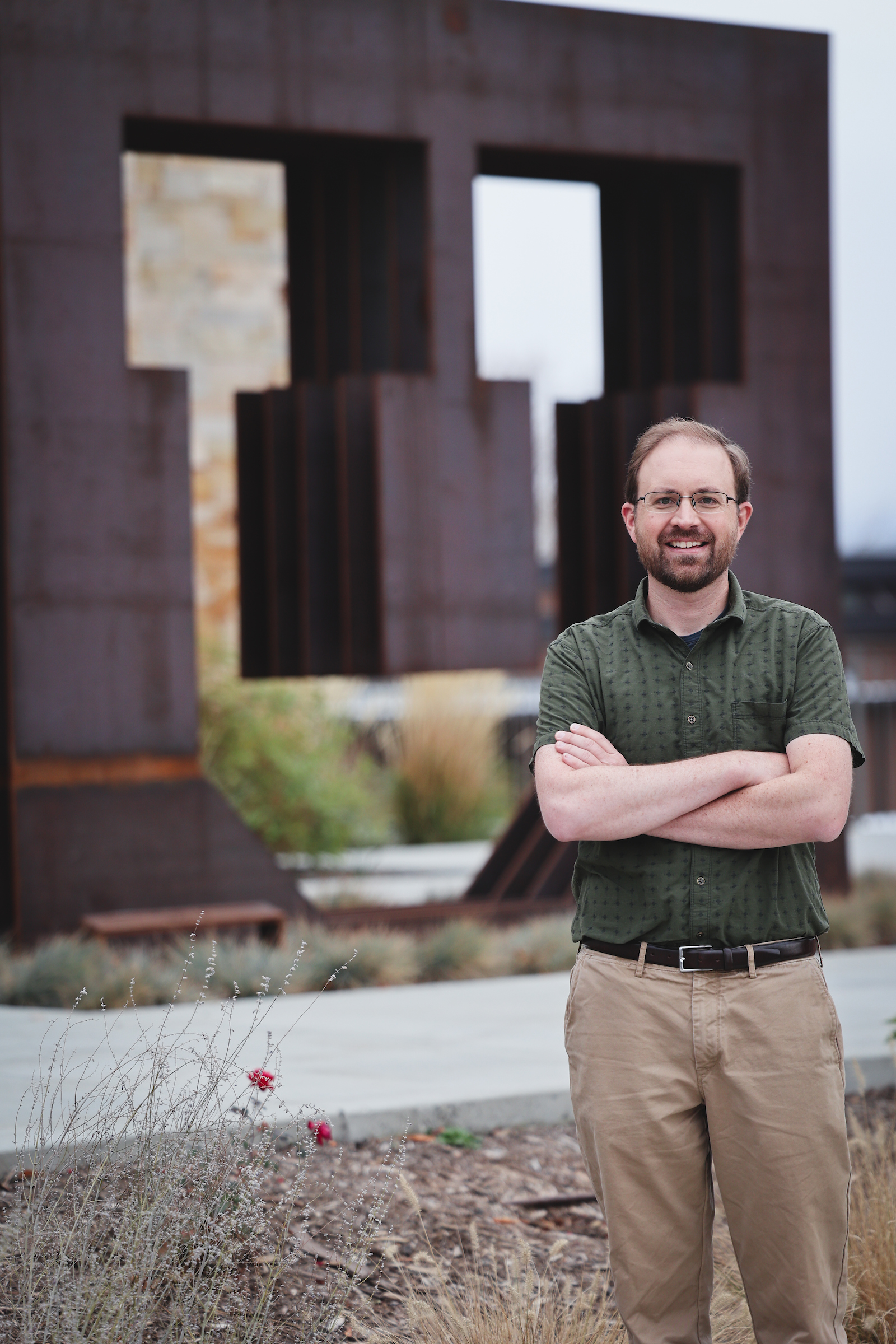
Randy Irmis, Ph.D. Image by Patrick Hardwig
Paleontologist Randy Irmis seeks to solve mysteries dating back 300 million years. In August, he received a Fulbright Fellowship for collaborative research in Argentina.
Dinosaurs keep Randy Irmis awake at night. Most recently, it’s a duck-billed species with parallel scratch marks along the fossil of its lower jaw. Randy tries to imagine this plant-eating dinosaur as it would have existed millions of years ago. He thinks about where it would stand as it eats. What predators might be lurking, patiently waiting for the moment of attack. His mind works to decipher how the scratch marks came to be.
“It turns out these are bite marks from some sort of animal that bit across the head of the duck-billed dinosaur,” Randy says. “But that’s just where the mystery starts, because then you wonder: ‘what happened? What sort of animal bit it? Was the duck-billed dinosaur alive when it got bitten? Or was it dead already?’ This is just a microcosm of the sort of mysteries we’re trying to unravel.”
Randy is a paleontologist, which means he studies the evolutionary history of life. But the nature of his work goes beyond dig sites and research. He’s a detective. And in the history of life’s evolution on Earth, there is always a mystery to solve.
“My mom loved watching British murder series on public television, and I share that love. Paleontology is very much that way because it’s like solving a mystery where you don’t have all the evidence,” Randy says. “You only have part of the evidence, and you’re trying to make good inferences based on evidence you do have.”
As chief curator and curator of paleontology at the Natural History Museum of Utah and faculty member in the Department of Geology and Geophysics at the University of Utah, Randy gets to explore mysteries unveiled through discoveries out in the field while also bringing fascinating collections together for museum visitors and future scientists. His roles operate through the unique intersection of the state-owned museum, which is also the natural history museum for the university, and the university-ran educational programs designed to instruct and train students interested in pursuing a career in geology and geophysics. It’s an opportunity that allows him to share his passions with a large audience.
“Our mission is to serve the entire state as well as the university, the city, and the county,” Randy says. Since the University of Utah is also a research institution, Randy and his colleagues are actively doing scientific research on the specimens that they care for.
“Modern science is all about teamwork and collaboration. You don’t have this brilliant scientist toiling away in obscurity on their own anymore,” Randy says. “It’s about working with amazing folks. That collaboration is at all levels at the museum, collaborating not only with other staff, but with both graduate and undergraduate students as well as volunteers.”
Randy’s favorite time period is the Triassic, which is when the first dinosaurs evolved. A vertebrate paleontologist, Randy focuses on animals with backbones and their fossils. “I’m really interested in how ecosystems on land have evolved through time, how were the different animals and plants and organisms interacting, and how did they respond and adapt to things like climate change?” he says.
In his research, Randy has collaborated with other scientists throughout the state and beyond, working with some located as far as Argentina and Ethiopia to solve mysteries. Doing the detective work as a paleontologist is something that Randy never gets tired of, and he enjoys sharing his enthusiasm for the work and how it helps humans gain perspective on the planet we inhabit by teaching and working with future scientists.
“Perhaps the most important part of what we do is engaging the next generation in science, technology, and related fields by collaborating with our public and school programming staff and exhibit staff to engage members of the community on really cool science stories,” Randy says.
Much of the work that Randy does is supported through public funding and revenue like admissions to the museum. But it’s the philanthropic support that has allowed Randy to get closer to solving mysteries through new technologies.
“Philanthropy is absolutely critical to what we do,” Randy says. “We’ve had huge support through the years from individuals as well as organizations and companies in terms of the research we do, the collections care, the fieldwork—all of the above. We couldn’t do what we do without philanthropic support.”
And it has paid off. Randy received a 2023 Fulbright Fellowship for collaborative research in Argentina. Hosted by the Instituto Argentino de Nivología Glaciología y Ciencias Ambientales (IANIGLA) in the city of Mendoza, he will spend six months in the country to study the evolution of ecosystems and paleoclimate during the Triassic Period, between 252-201 million years ago.
As Randy and his team continue to dig for fossils, educate university students, and help children see themselves as future scientists, he hopes that more people will take the opportunity to visit the museum, whether in person or virtually. Afterall, there is much to learn to help us understand more about life on Earth—and Utah may be one of the best places on the continent to do just that.
“Utah is the best place to be a paleontologist. There are so many different time intervals represented in our rocks and different environments with many different types of fossils,” Randy says. “It just makes it the best place to be if you want to understand the history of life on Earth.”
by Autumn Thatcher

